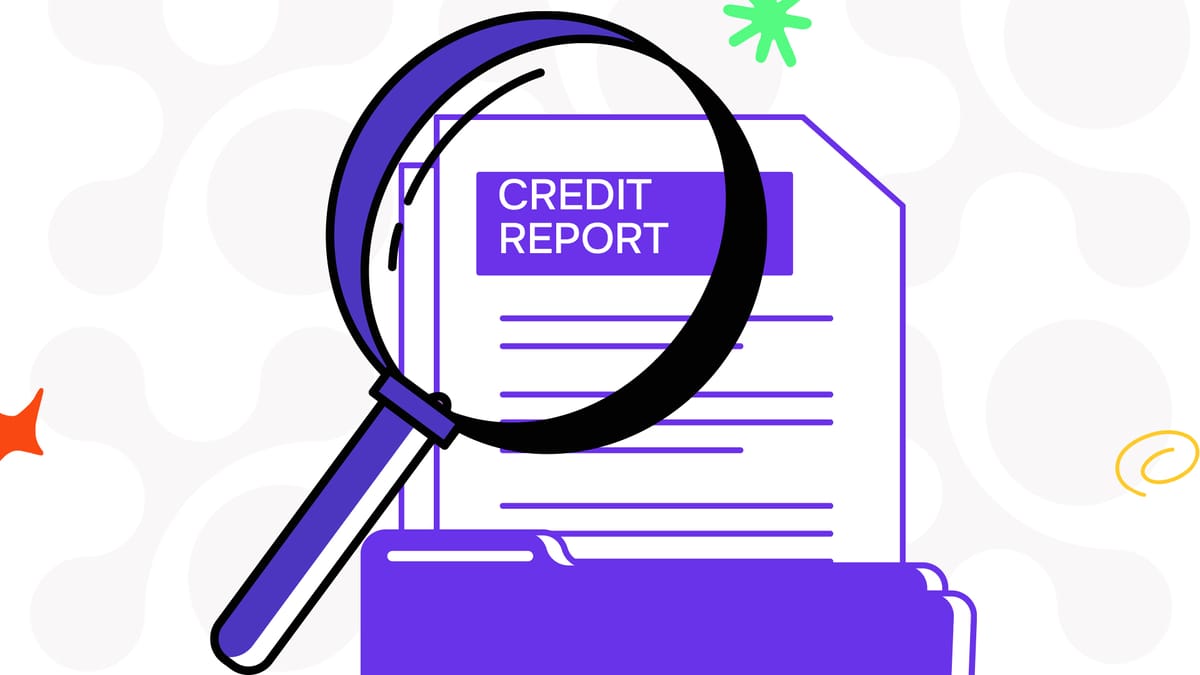How to Read and Understand Your Credit Report (A Beginner’s Guide)
Your credit report is a detailed record of your credit history. Learn how it plays a critical role in determining your financial opportunities.

Your credit report is a detailed record of your credit history and plays a critical role in determining your financial opportunities. However, with its technical terms like inquiries, collection accounts, credit utilization, etc. it can feel overwhelming at first glance. Understanding each section of your report can empower you to take control of your financial health.
Here’s a breakdown of the key components of a credit report and how each impacts your score.
1. Personal Information
What It Is: This section includes your basic information, such as your full name, current and past addresses, Social Security number, date of birth, and employment history.
Why It Matters: Although it doesn’t directly affect your credit score, this information is used to identify you and match you to your financial records. It’s important to review for accuracy; incorrect information could signal identity theft or reporting errors.
2. Credit Accounts (Tradelines)
What It Is: Often the largest section of a credit report, this includes details about each of your credit accounts, such as credit cards, loans, and mortgages. For each account, you’ll see the account type, balance, credit limit, payment history, and current status (open, closed, or delinquent).
Why It Matters: This section is the core of your credit score calculation. Payment history is especially important, as missed payments can significantly lower your score. Additionally, your credit utilization rate (balance-to-limit ratio) on revolving accounts affects your score—lower utilization is better for your score.
3. Public Records
What It Is: Public records contain information on any bankruptcies, tax liens, or civil judgments. These records come from public filings and not directly from creditors.
Why It Matters:Negative public records can be detrimental to your credit score, especially bankruptcies, which remain on your report for up to 10 years. If you see an error here, it’s crucial to dispute it immediately, as this section can have a severe impact on your credit.
4. Collections Accounts
What It Is: This section lists any accounts that have been sent to collections, indicating overdue payments on loans or bills that haven’t been paid as agreed.
Why It Matters: Collections can significantly lower your credit score and stay on your report for up to seven years. Even after paying off a collection account, the record may remain, though some scoring models do not factor paid collections into your score. Monitoring this section can help you avoid repeated mistakes and understand how past behavior impacts your credit health.
5. Credit Inquiries
What It Is:This section shows who has reviewed your credit report recently. There are two types of inquiries: “hard” and “soft.”
- Hard Inquiries: These are credit checks conducted when you apply for credit (loans, mortgages, credit cards) and can impact your score.
- Soft Inquiries: These are checks by you or companies reviewing your credit for promotional offers and do not affect your score.
Why It Matters:Too many hard inquiries in a short period can lower your credit score. Hard inquiries stay on your report for about two years, so it’s best to apply for new credit sparingly.
6. Account Summary
What It Is: Typically found near the top, this section is a high-level summary of your credit, including total balances, available credit, and any negative items.
Why It Matters: The account summary gives you an overall picture of your credit health. Lenders may use this as a snapshot to assess your financial profile before diving into the details. Keeping balances low, having a mix of credit types, and avoiding missed payments are all ways to maintain a positive summary.
Tips for Reviewing Your Credit Report
- Check Regularly for ErrorsMistakes in any section could impact your credit score, so it’s essential to review your report regularly. Look for unfamiliar accounts, incorrect personal information, or inaccurate payment history.
- Monitor Your Payment HistorySince payment history is a major factor in your score, try to catch and correct any missed payments quickly. Consistent on-time payments are one of the best ways to build and maintain a strong score.
- Manage Your Credit UtilizationAim to keep your credit utilization rate below 30% on revolving accounts. High balances relative to credit limits can make you appear overextended, which can harm your score.
- Limit Hard InquiriesEach hard inquiry can shave a few points off your score, so only apply for credit when necessary. Space out applications to avoid appearing as a high-risk borrower.
- Take Advantage of Free ReportsUnder federal law, you’re entitled to a free credit report annually from each of the three major bureaus: Equifax, Experian, and TransUnion. You can access these at AnnualCreditReport.com and keep track of your progress over time.
Understanding your credit report is the first step to better financial health. By knowing what each section means, you can identify areas to improve, spot mistakes to dispute, and ultimately build a stronger credit profile. A clear report can be your key to lower interest rates, better financial opportunities, and more control over your financial future.
Join the Waitlist
We’re launching soon, and the next 100 people to join our waitlist will enjoy an exclusive 30% discount.
Don’t miss out—click here to secure your spot!




Comments ()